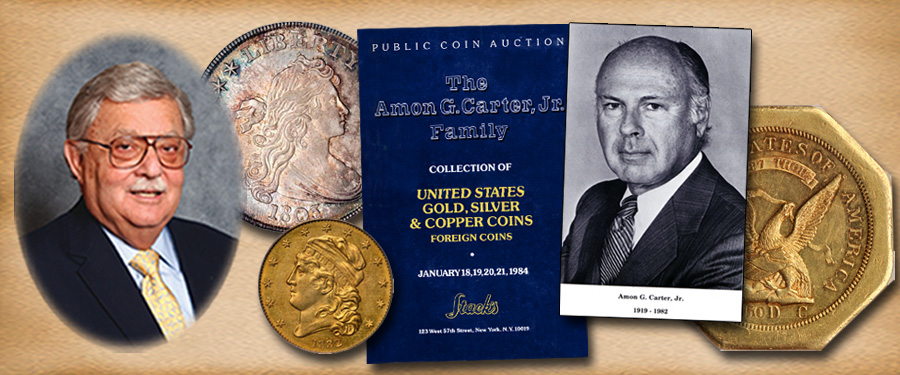
As written in the early parts of this story of a family collection, the collection sold by Stack’s in January 1984 was quite comprehensive. As Texans, dedicated to collecting and preserving items that related to western American culture, the Carter family assembled a wonderful collection of private and territorial gold coins, issued by the United States government as well as by private assayers who served the growing need for money in our western states. As miners retrieved gold from streams and mines, they wanted "hard money" to use in commerce.
Early in 1849 a few assayers, who were among the first settlers in California, established local Assay offices to convert the nuggets and gold flakes found in the streams, to ingots and later to coins. This, of course, was before the federal government established the San Francisco Mint in 1854.
The Carters collected coins and ingots of this era, for it was foundational to the growth of the West. In the Stack’s auction catalog of their collection could be found the following:
Norris, Gregg, & Norris, $5 dated 1849, one of the earliest assayers.
Augustus Humbert & Co.
$50 Octagonal gold (slugs) of the various varieties issued, Lettered Edge and Milled edge, with various finenesses.
A $20 and a $10 issued in 1851
1852 U.S. Assay Office of Gold $50 Octagonals. (Issued by Humbert in his official position as U.S. Assayer). Also $20 gold.
Dubosq & Co. $10 gold 1850
Dunbar & Co. 5 gold 1851
Kellogg & Co. $50 Round "Slug" 1855
Wass, Molitor & Co. $10 and $5 1852, and $ 50 Round "Slug" 1855. And a $20
Mormon. Salt Lake City. $20, $10 and $5 gold.
What made this portion of the collection so special was the quantity of $50 gold coins offered at one time — 31 examples in one sale. These included, Augustus Humbert $50 gold octagonals: six lettered edges and 11 reeded edges; U.S. Assay Office of Gold, nine octagonals; Wass Molitor & Co. $50 gold, four round, and Kellogg & Co. $50 gold, one round.
Before this collection came to auction, the main source for early private and territorial coins was old time collections that had been formed in the late 19th and early 20th century. These collections had, at best, one or two of each of the $50 gold pieces. To accumulate the number offered in the Carter Family sale was considered an unheard of task.
The competition to acquire $50 gold slugs was quite keen indeed. Prior to 1962 when these were on display at various conventions, the Carters had one great competitor for exhibition — George O. Walton. During a convention in the late 1950s, there was a competition between Walton and Carter to see who had the most $50 slugs. When the items in their displays were counted, each showed 31 various specimens — making 62 on view at one time. Both competitors laughed about it and said that at the next national convention they would show more. Neither of them told how many they could have or assemble.
The next year, either 1959 or 1960 (before George Walton had his fatal auto accident in 1962), they both accepted the challenge to see who could display the most $50 "slugs." So at the summer ANA they began to lay out their displays. It may sound unreal, but each had 51 gold "slugs" — to see that many in one area was mind-boggling. Two ANA judges went to rule which collector had shown more than the other. As both displayed 51, the judges ruled that Amon G. Carter had more than George O. Walton. How could this be? Walton had 49 “Pioneer Slugs" and a pair of Panama Pacific ones. Carter had 51 “Pioneer Slugs." Since the bet was on Pioneer pieces, George lost. They both had a great laugh, shook hands and enjoyed showing the slugs off to everyone who came to see. Amon, being a good sport, took George out for a few drinks and a big dinner "Texas style."
This “competition” displays the warmth and friendship that can be found when collectors with similar interests get together and enjoy their coins and each other. It was fun to kid each other, admire such wonderful coins and relate stories about their collections. That was what conventions were about more than a half a century ago.
The Carter Family auction catalog had another section, which I will discuss in Part 8 of this great story. It explains further how collectors can continuously make their cabinets more interesting and exciting to own.





